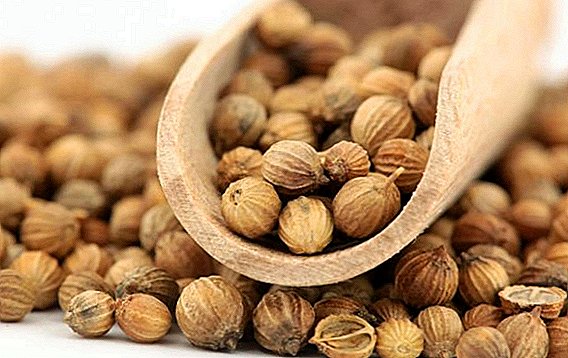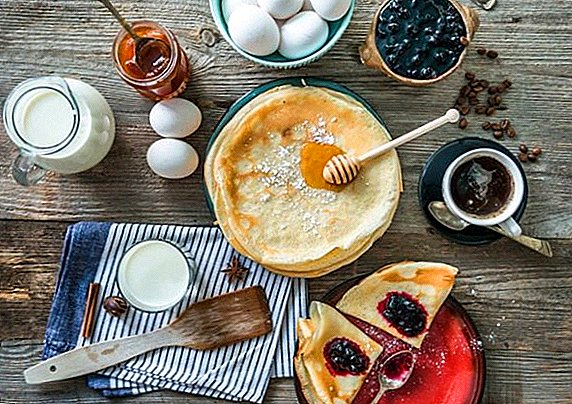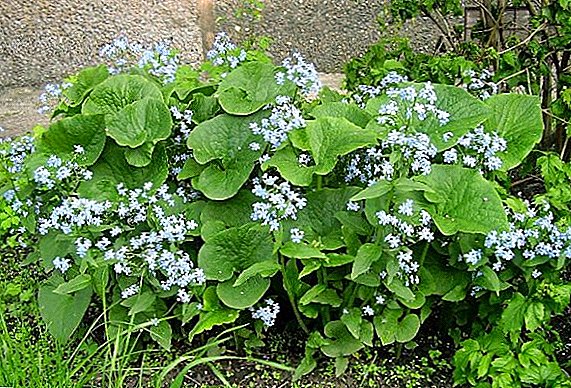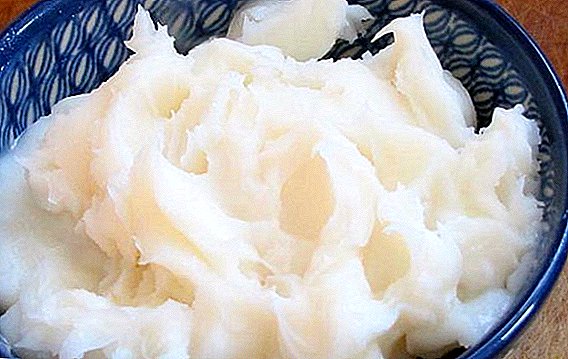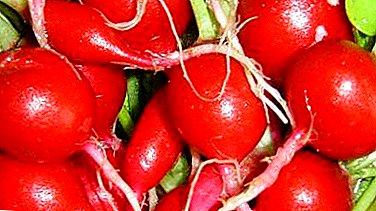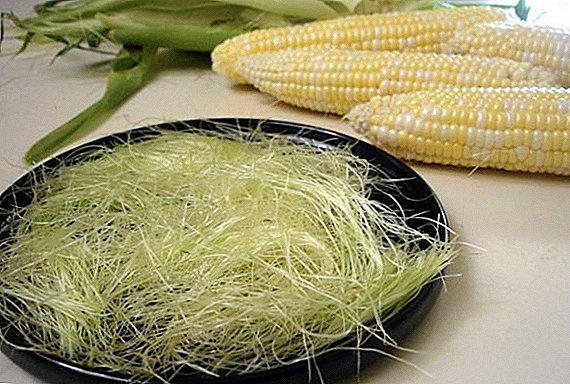
Unlike the apple and pear trees that have dominated our gardens for many centuries, plum, in the form in which we are accustomed to see it, has no wild forms.
And it appeared in Western Asia as a result of spontaneous crossing of the turn and cherry plum.
Historically, her way to Russia followed the Greek and Roman limits to become a home plum in Russian gardens.
Plum description red ball
Description varieties of plums "Red Ball". The variety is very popular with gardeners near Moscow as a table (for taste) and universal (if possible processing) variety. Another significant advantage was its small height, unlike the domestic plum, which grows up to 15 meters in height, the “Chinese woman” in its dimensions is very convenient for harvesting.
Plum tree grows up to 2.5 meters, having a half-meter boom and sprawling branches, forming a rounded, not very thick crown.
Crown annually grows new shoots and bouquet twigs. It is they who assume the function of fruiting. So that this process does not stop, systemic pruning of shoots up to their optimum length of 50-70 cm is required. The trunk of the tree has a brown color, including skeletal branches, a smooth surface, without edge.
 Chinese plum root system - horizontal, in a 40-centimeter layer of soil, but the area they occupy can be compared to the projection of the tree crown.
Chinese plum root system - horizontal, in a 40-centimeter layer of soil, but the area they occupy can be compared to the projection of the tree crown.
This feature must be taken into account when planting a sapling. There is an adult tree and deep roots, extending down to 8 meters.
Vegetative and generative buds plants are formed in kolchatka on bouquet sprigs. Terms of disclosure of buds are not the same: first there are flowers, and then - the leaves.
Plum flowers, like all rose flowers, of five petals, white or pink. The peculiarity is that one bud usually throws 3-4 flowers.
In the flowering period the tree seems fluffy from an abundance of flowers, but this does not mean that they will all form the ovary and give fruit.
The flowering of Chinese plum, as a rule, falls on a period of unstable cool and wet weather. Therefore, some flowers fall off before pollination, and the other depends on many components of the pollination mechanism. The variety "Red Ball" many nurseries are positioned as self-fertile, but from the comments of practitioners can be seen that to guarantee the harvest, he needs the help of additional pollinators.
Pollinators for Chinese plums can not be home plums - only relatives by appearance.One such variety suitable for pollination is the Chinese Skoroplodnaya.
But the most reliable pollinator - cherry plum. She must be in the next landings with the “Red Ball”.
Flowering phase the Chinese plum passes so quickly that its decorative effect cannot even be used in landscape design. The flowers come to be replaced by leaves that are elongated, saturated green in this plant, collected in bouquets. Median vein stands out especially, bending the entire leaf blade. The tip of the sheet is curved outward, the edges are even, finely toothed.
Fetus fully consistent with the name of the variety: round, large (up to 40gr), with a barely perceptible lateral waist. Dense smooth skin of bright red color with a bluish wax coating. Light yellow pulp is characterized by friability and fibrous structure, filled with fragrant juice, which has a pleasant sweet taste.
At the heart of the fetus is an oblong, inedible bone, loosely connected with the pulp, which makes it easy to separate. The contents of the bone when released into the stomach, under the influence of enzymes can release hydrocyanic acid.
A photo
Visually get acquainted with the plum "Red Ball" can be in the photo below:



Characteristics of a variety
 Tasting merit fruit rated 4 points. Given the triadness of the flowers of the plant, one can imagine how densely ripening fruits stick around the branches, sometimes hiding the leaves.
Tasting merit fruit rated 4 points. Given the triadness of the flowers of the plant, one can imagine how densely ripening fruits stick around the branches, sometimes hiding the leaves.
This feature of flowering contributes high yield (up to 18 kg from a tree).
Chinese plum blossoms 12 days earlier than home plum. It is not surprising that its fruits ripen much earlier - by August: the variety belongs to the earliest.
The period of reproductive maturity of the plum tree of this variety is 2-3 years from planting.
Frost resistance is high.
Transportability of fruits allows long-distance transport.
The plant is resistant to the fungal disease of stone fruit cultures - klyasterosporiozu.
It is important to clarify this fact, because the "Chinese" grow poorly in solitude. Best of all they feel close to cherry plum.
Obvious the advantages of the Chinese plum "Red ball":
- Elegant appearance of large, juicy fruits of table purpose.
- Good yield.
- Early reproductive readiness of the variety - 2-3 years.
- Early ripening.
- Good frost resistance of the kidneys.
- Transportability.
- The universality of the use of fruits.
- Breeding prospects.
- Resistance to fungal infections.
- Compact crown as a convenience in harvesting.
Significant deficiencies at varietal tests it was not revealed, but:
- Early flowering puts at risk the formation of the ovaries.
- For a guaranteed crop need additional pollinators.
- The root neck of a tree has a tendency to sub-heating.
Problems with root sub-root can be avoided by planting a seedling in a harvested mound (50 cm high).
Breeding history
At the other end of the continent, also as a result of evolutionary processes, a round and bright, like everything in China, appeared Chinese plum. The main advantage of an East Asian relative is the ability to endure the most severe frosts (up to -45◦).
Since its range extended far to the north, the second name of this fruit is the Ussurian plum, the color of the fruit is red. Exceptional frost resistance has made this form a favorite stock for new varieties.
Learn more about other no less remarkable varieties of Chinese plum: Orel dream, Skoroplodnaya, Alyonushka.
WITH Chinese plums as early as the 19th century, American caller from California Luther Burbank conducted his selection experiments. 38 of its varieties based on Chinese plum are listed in the world assortment as the best. Experts of the Nikitsky Botanical Garden and HSTI of horticulture and fruit growing, in Eastern Biryulyovo, Moscow, worked with these hybrids.
In the process of crossing the plum "Burbank" and "Ussuri Red" turned out a new hybrid, recommended by the State Register for the Central Region - "Red Ball".
Not collected on time, these fruits, already soft, can burst from ripeness and finally lose their presentation.
Care and landing
In the care of Chinese plum is no different from home plums.
The same obligatory agrotechnical measures:
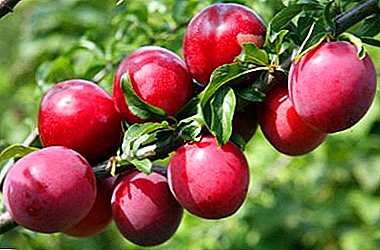 the choice of the place most favorable for growth (light, protection from the wind, remoteness from other plants);
the choice of the place most favorable for growth (light, protection from the wind, remoteness from other plants);- fertilization of the soil through the application of organic fertilizers;
- compliance with the level of soil acidity in the range of pH 7.5;
- removal of weeds, which are often the home of various pests;
- loosening the soil before each irrigation in the root circle (to saturate the air and deprive the fungal pathogens of a favorable environment);
- top dressing by different types of fertilizers in the relevant phases of plant growth;
- regular watering until mid-summer, and in dry years - until autumn;
- all types of pruning that promote plant growth: sanitary, formative, restorative, regulating, rejuvenating;
- timely harvest;
- preparing the plant for the winter;
- protection of plants from rodents in the winter.
Application of fruits
how Universal variety "Red ball" used by:
- in the treatment and prevention of various diseases, as it contains antioxidants and phytonutrients;
- in dietology, because the plum is able to remove harmful cholesterol;
- in cosmetology, where plum oil fatty acids are used;
- in the confectionery industry (jam, jams, jellies, marmalade, candy fillings);
- in the production of beverages (juices, compotes, syrups, tinctures, liqueurs, light wines).
The main advantage of homemade plums - low calorie is not at all peculiar to the "Chinese woman", which is second in calories only to grapes.
The Chinese love to give each other as a gift a basket of fruit, but they will never meet a plum, even such an elegant one as the "Red Ball". It’s just that the Chinese sound the word "plum" in sound like the word "separation."


 the choice of the place most favorable for growth (light, protection from the wind, remoteness from other plants);
the choice of the place most favorable for growth (light, protection from the wind, remoteness from other plants);